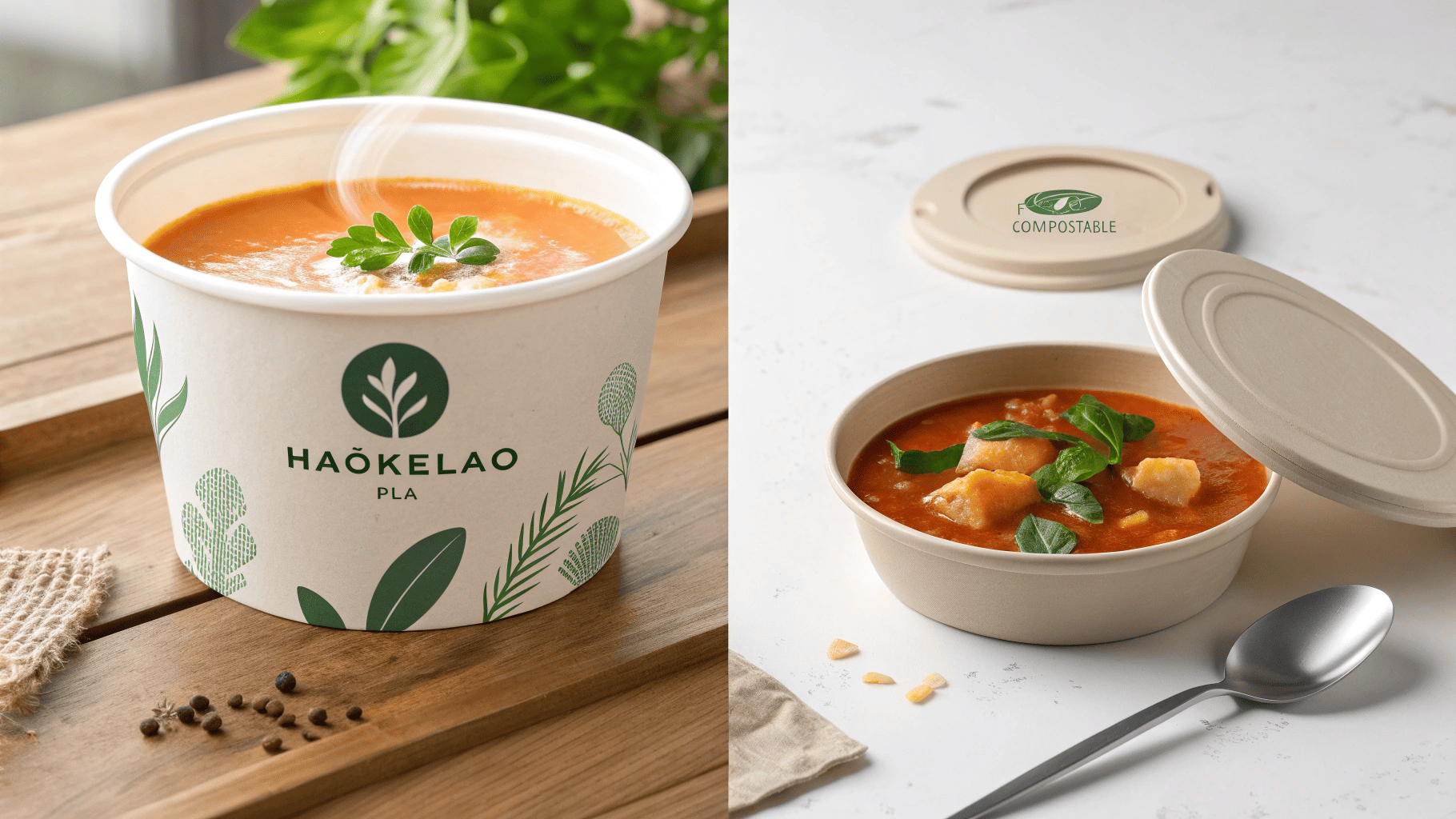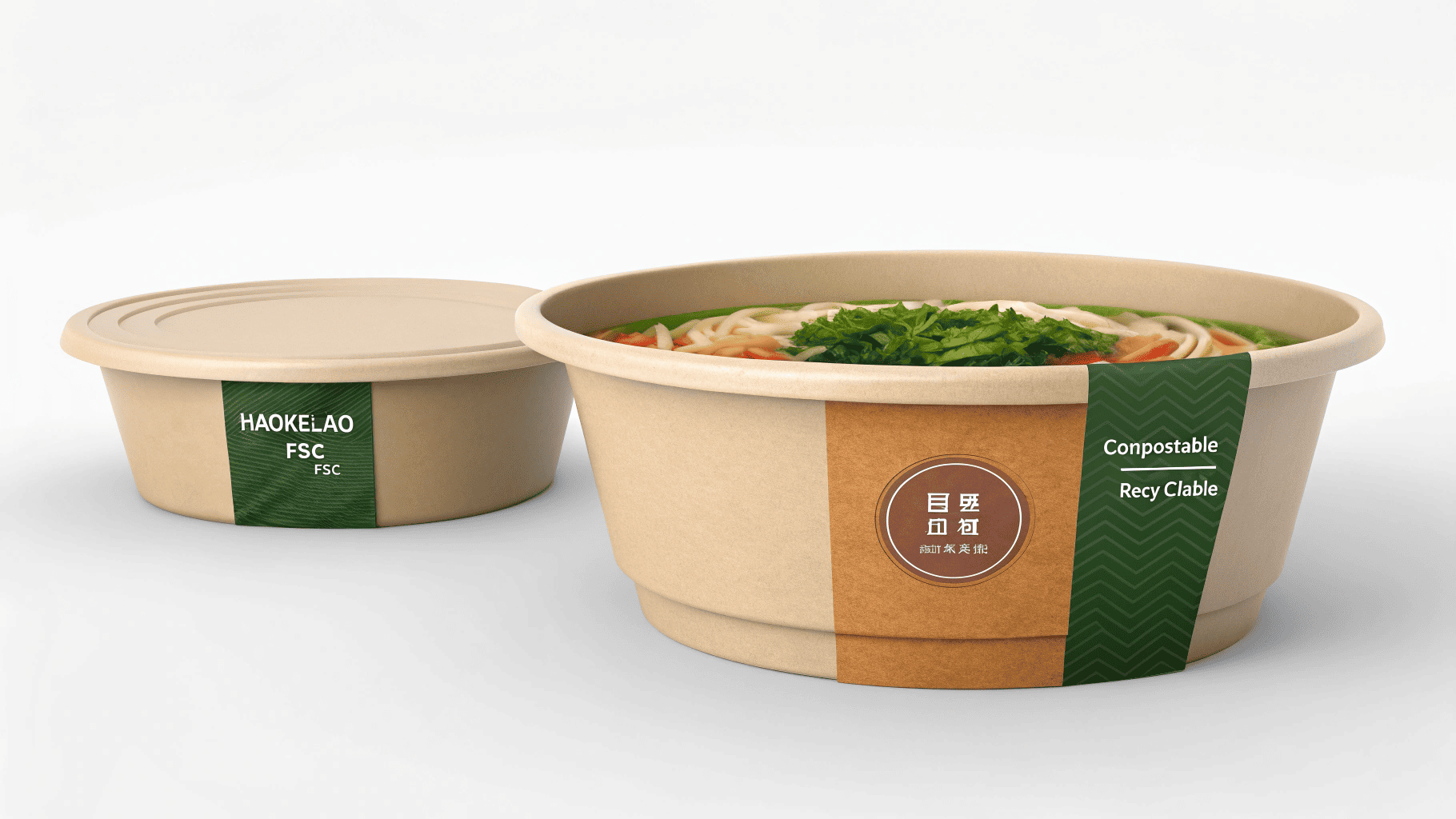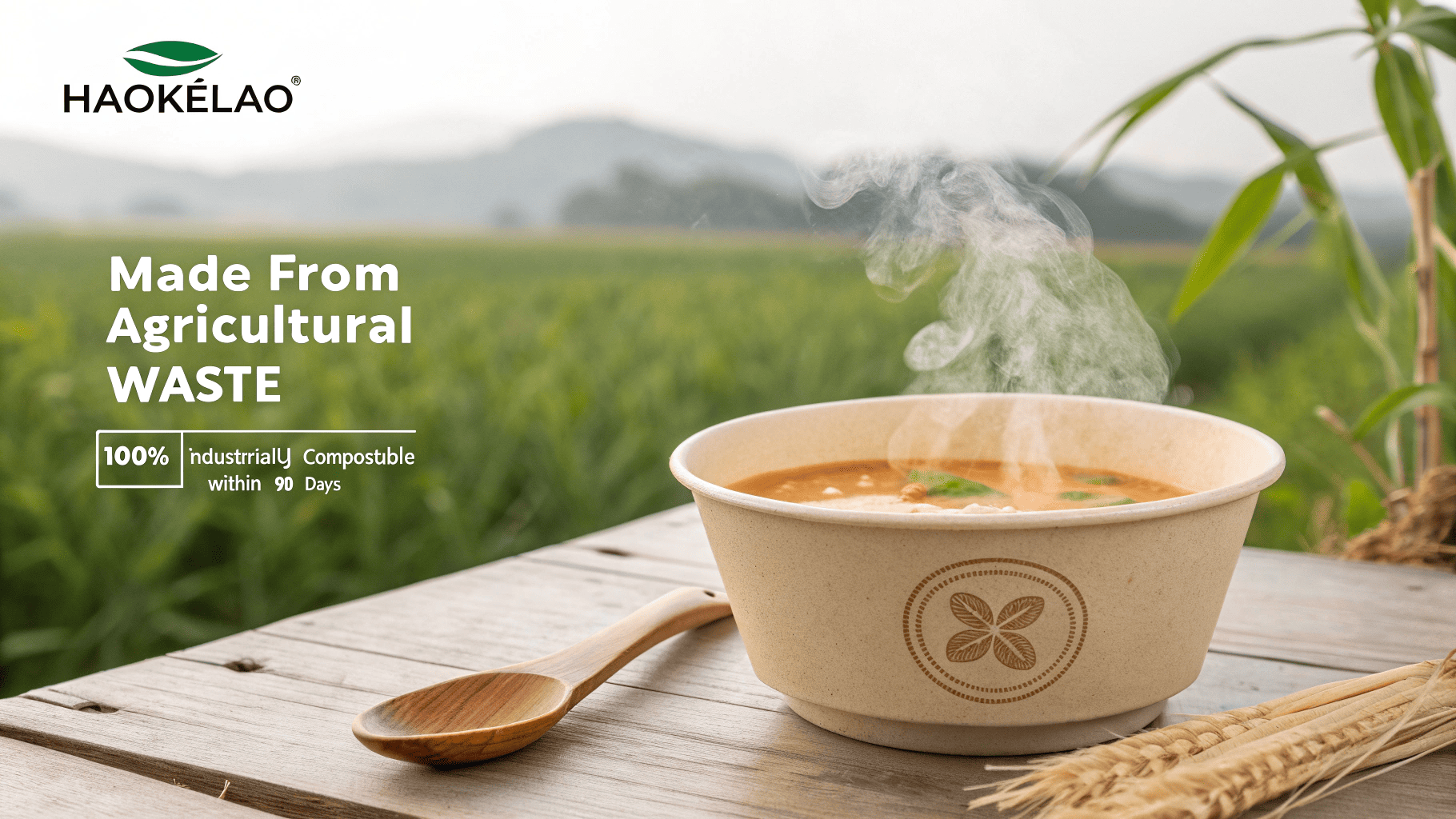You want a container that is safe for hot soup, but you also want to make sure it does not harm the environment. Are soup paper bowls1 really the answer?
Yes, high-quality soup paper bowls1 made from food-grade pulp2 or bagasse fiber3 with PE or PLA coating4 are safe, renewable, and lower-carbon. They meet strict food-contact and compostability standards5.

I have spent years supplying soup packaging to brands that made the switch from plastic to paper. The data shows it works: lower environmental impact, safe for boiling contents, and good for brand image. Let’s go through the key questions I get on this topic.
Are paper soup containers safe?
Food safety is always the first concern for any food service business.
Yes. Food-grade paper bowls meet GB 4806.8-2016 in China, FDA 21 CFR 176.170 in the USA, and use FSC-certified pulp6 or bagasse fiber3 without fluorescent whitening agents.

The coating matters. PE has strong chemical stability and stays safe under 100°C. PLA, from corn starch, is compostable and meets EN 13432. Migration tests with 95°C hot soup show ≤ 5 mg/dm² total migration—well below the 10 mg/dm² limit in China and the EU.
Performance testing under 95±2°C hot soup for 30 minutes shows no leaks, no delamination, and no strange smell. In my own orders from QS/FDA-certified factories, pass rates exceed 99.5%.
Food Safety Standards Compliance Table
| Material & Coating | Safety Standard Met | Heat Resistance | Migration Test Result | Notes |
|---|---|---|---|---|
| FSC pulp + PE coating | GB 4806.8, FDA 21 CFR 176.170 | ≤ 100°C | ≤ 5 mg/dm² | Very stable and reliable |
| FSC pulp + PLA coating | GB 4806.8, EN 13432 compostable | ≤ 95°C | ≤ 5 mg/dm² | Eco appeal and food safe |
| Bagasse fiber + PLA | GB 4806.8, EN 13432 compostable | ≤ 95°C | ≤ 5 mg/dm² | Uses agricultural waste |
| Bagasse fiber + PE | GB 4806.8, FDA 21 CFR 176.170 | ≤ 100°C | ≤ 5 mg/dm² | Strong barrier, recyclable in some streams |
Are paper food containers biodegradable?
Many assume paper is always biodegradable, but coatings matter.
PLA-coated paper bowls degrade within 90 days in industrial composting without visible residue. PE-coated bowls are not fully biodegradable but can be recycled in paper–plastic separation systems.
<sup id=](https://papercupshkl.com/wp-content/uploads/2025/08/two-panel-photorealistic-comparison-l.png) 1 decomposing in facility" title="Biodegradable Paper Soup Bowls" />
1 decomposing in facility" title="Biodegradable Paper Soup Bowls" />
Plain paper breaks down fast, but without coating, it cannot hold liquids. A compostable PLA lining solves that problem. PE coatings extend lifespan but require special recycling infrastructure. Bagasse bowls reduce wood use and give value to agricultural waste—each ton of bagasse pulp saves about 17 mature trees from harvest.
What is the most environmentally friendly food container?
When we compare materials, we must balance performance with impact.
For hot soup service, bagasse fiber3 bowls with PLA coating offer maximum eco-benefits. They use agricultural waste, are compostable, and still handle boiling liquids safely.

Compared to similar-size plastic bowls, paper bowls cut lifecycle carbon emissions by about 35% (EPPA, 2022). In my projects, brands that switch see measurable plastic reduction and CO₂ savings, with no loss in performance for delivery or dine-in.
Environmental Impact Comparison
| Material & Lining | Carbon Reduction vs Plastic | Compostable? | Renewable Resource? | My Recommendation |
|---|---|---|---|---|
| Bagasse + PLA | ~35% ↓ | ✅ | ✅ | Best eco-performance |
| FSC pulp + PLA | ~30% ↓ | ✅ | ✅ | Good balance of image and function |
| FSC pulp + PE | ~35% ↓ | ❌ Recyclable in some facilities | ✅ | Best for long holding & delivery |
| PP/Plastic | 0% | ❌ | ❌ | Avoid where possible |
What is the healthiest material for food containers?
Health safety includes raw material integrity and absence of harmful leaching.
Food-grade FSC pulp or unbleached bagasse fiber3 with PE or PLA coating4 is healthiest for hot soup, as they meet strict migration limits and withstand heat without releasing harmful chemicals.

My top choices are unbleached bagasse with PLA for sustainability, and FSC pulp with high-quality PE for performance under prolonged heat. Both are already in use by airlines, large café chains, and high-volume delivery brands.
Case in Action: Shanghai Soup Takeaway Brand
In 2023, a well-known Shanghai soup and noodle7 delivery chain replaced PP plastic bowls with thick-wall PLA-coated paper bowls.
Annual migration test during 95°C hot soup simulation was 2.3 mg/dm² (well below limits).
This change cut 28 tons of plastic per year, equal to about 87 tons of CO₂e greenhouse gases.
They print a green eco mark on the bowl, and customer ratings rose after the change.
Conclusion
Yes—modern soup paper bowls1 can be both safe and eco-friendly if made from certified pulp or bagasse and coated with PE or PLA. They pass heat and migration tests8, cut carbon, and support a plastic-free future9.
1.Explore the benefits of soup paper bowls and how they contribute to a sustainable future. ↩
2.Learn about food-grade pulp and its role in creating safe and eco-friendly food containers. ↩
3.Discover how bagasse fiber is utilized in food packaging and its environmental advantages. ↩
4.Understand the differences between PE and PLA coatings and their impact on food safety and sustainability. ↩
5.Find out about the compostability standards that ensure food packaging is environmentally friendly. ↩
6.Learn about FSC-certified pulp and its significance in sustainable packaging. ↩
7.Discover the most sustainable and safe packaging options for serving hot soup and noodles without compromising quality or the environment. ↩
8.Understand the importance of migration tests in ensuring food safety. ↩
9.Explore strategies for moving towards a plastic-free future in food packaging. ↩
